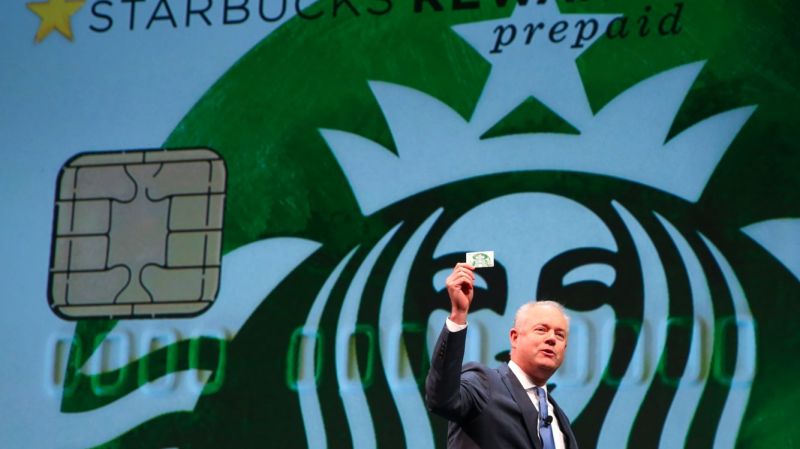Who’s Afraid of the Strategic Consumer?
When overhauling their loyalty programs, firms can find a way to leave no customer behind and still make money

- Firms in bellwether industries are changing their loyalty programs: instead of rewarding customers for the quantity or frequency of purchases, they are now rewarding for amount spent. The trend has prompted consumer backlash.
- A study looked at how these changes in loyalty program design affect the behaviour of “strategic” consumers — those whose purchasing behaviour is based on price and loyalty program requirements.
- The study found that under the spending-based design, firms see a greater profit lift and can benefit from strategic consumers even when they can’t under the quantity-based program.
- For some segments of loyalty plan customers, “buying up” in a quantity-based program or “spending up” in a spending-based program is a smart strategic choice.
- Hybrid designs that allow consumers to choose which threshold to reach to qualify for premium status can offer win-win scenarios.
Consumers may rail against loyalty program restrictions, but they also love loyalty programs. We all know someone who goes on “mileage runs” or “mattress runs” — boosting their flight or hotel reservations in order to attain the benefits that come from premium status. One study found that, during one month in 2013, 60 percent of frequent travelers engaged in a mileage run and 25 percent in a mattress run.
So when firms are brave enough to overhaul how they award loyalty points and status, they are sure to generate plenty of shade. Over the past five years, for example, major firms in bellwether industries realized that their loyalty programs were based on legacy thinking. Instead of rewarding customers for the quantity or frequency of purchases, they found that their programs would be better optimized by rewarding for amount spent.
Starbucks managers, for example, were frustrated that many customers were asking baristas to ring up one item at a time to collect more “stars” (Starbucks loyalty points). In 2016, they changed their loyalty program. They used to award one star per transaction and required 30 stars for Gold status. Under the new loyalty program, they now award two stars per dollar spent and require 300 stars for Gold status. When it was announced, the Twitterverse exploded. Starbuck’s “buzz score” — which measures how a brand is viewed — dropped by half in just eight days. (It didn’t seem to hurt Starbucks: membership in the firm’s loyalty program increased 18 percent over the following year.)
Fear of consumer backlash, however, has not changed the basic calculus around loyalty programs. “While the exact mechanisms vary, the overall trend is clear,” says Anton Ovchinnikov, Distinguished Professor of Management Analytics at Smith School of Business, Queen’s University. “Firms are changing their programs from quantity-based toward spending-based designs.”
Understanding Strategic Consumers
Ovchinnikov was working on a study of loyalty programs with colleague So Yeon Chun (McDonough School of Business) when the Starbucks backlash flared. He realized that they were on to something. Their study looked at how these changes in loyalty program design affect the behaviour of “strategic” consumers — those whose purchasing behaviour is based on price and loyalty program requirements.
“A critical aspect of this problem is that consumers exhibit sophisticated strategic behaviour,” says Ovchinnikov. “Rather than viewing each purchase in isolation, they consider multiple purchase decisions to maximize the total surplus over a period of time. The prices they pay and the possible premium-status benefits in the loyalty program both play an important role in customers’ decision making.”
Their now-completed study has comforting insights for both firms and consumers. Contrary to conventional thinking, firms can actually profit from consumers buying strategically. And consumers can benefit from spending-based loyalty programs, provided firms are willing to tweak them to minimize the number of losers.
“While traditionally viewed as means of softening competition,” Ovchinnikov says, “we show that even without competition, loyalty programs can be valuable due to how they affect strategic consumer behaviour.”
There’s Profit in Those Programs
Ovchinnikov and Chun’s study is based on a sophisticated consumer behaviour model that captures strategic behaviour and incorporates consumer response to the firm’s prices and loyalty program design decisions. Using this model, they derived consumer demand, characterized rich patterns of consumer behaviour, and factored them into the firm’s pricing and loyalty program optimization efforts.
The researchers were able to compare a firm’s optimal profit from a loyalty program when consumers were being strategic versus buying myopically only based on their needs. They found that both quantity-based and spending-based loyalty program designs can be profitable with strategic consumers, with bigger benefits occurring under the spending-based design.
“That the firm can benefit from strategic consumers is particularly interesting because most of the academic research literature established that strategic consumers negatively impact the firm,” says Ovchinnikov.
Keeping Benefit Costs Down
For a quantity-based loyalty program, the key to profitability is to keep the cost of providing a premium status benefit low. These costs are easy to overlook but can be significant; examples of premium benefit costs are free shipping of online orders or free baggage check-in with airlines for the VIP, Gold, and similar premium customers.
Under the spending-based design, firms see a greater profit lift and can benefit from strategic consumers even when they can’t under the quantity-based program. There are three reasons: there’s an increase in revenue from consumers who spend more; an increase in the segment that strategically qualifies for the premium status; and a decrease in the segment of consumers who “buy up” by making additional purchases to qualify for status and thus are more costly to service.
From the consumer’s side, this research supports the logic of mileage runs. For both types of loyalty program designs, it pays to be strategic. For some segments of customers, Ovchinnikov says, “buying up” in a quantity-based program (that is, buying something you don’t really need) or “spending up” in a spending-based program (paying more when a lower price is available) is a smart strategic choice — it may allow a consumer to qualify for a premium status and benefit on all purchases.
Of course, in the transition to spending-based loyalty programs, some consumers may lose out. But, as this research shows, it doesn’t have to be that way. A firm can design its offering in such a way that no consumer is negatively hit. Hybrid designs where consumers can choose which threshold to reach to qualify for premium status — buying more frequently or spending more — allow for more win-win scenarios. Firms just have to be willing to give up small incremental profit rather than trying to squeeze out every cent.
Hybrid designs where consumers can choose which threshold to reach to qualify for premium status — buying more frequently or spending more — allow for more win-win scenarios
Ovchinnikov says this may be where Starbucks went wrong. “With the Starbucks backlash, the question is, were they too greedy by going for the maximum profit or could they have positioned themselves as caring for consumers and deliberately left some slice of profit on the table to ensure no customer would be worse off?”
Ovchinnikov is now working to validate and extend this research by using industry data. He is also trying to determine the prevalence of strategic consumer behaviour among loyalty program users.
The Smith researcher has advice for both firms and consumers. Firms should start seeing strategic consumers as an opportunity to tap rather than a risk to mitigate. For example, they can send an email to consumers registered in a loyalty program to inform them how close they are to premium status and the steps they can take to earn more points. They should also consider how strategic consumers respond to changes in loyalty programs and design them to allow for some choice in how the transition is handled.
And for consumers? “A change like this is not necessarily bad,” says Ovchinnikov. “It’s natural to think that if a firm changes its loyalty program, it’s for their own benefit. But this research shows that many consumers can benefit from it as well. This is not necessarily a zero-sum game.”
—Alan Morantz
Related: “Strategic Consumers, Revenue Management, and the Design of Loyalty Programs,” S.Y. Chun and A. Ovchinnikov (2018), forthcoming in Management Science.





